
Attention, men of Earth: Good news!
Notions of “masculinity” are changing for the better in the 21st century. (In the Western world, anyway.)
Related: Watch Straight Men React To Being Touched Seductively By Gay Men On An Escalator
According to The Good Men Project, researchers have been poking around and examining men’s social mores in various countries, and what they’ve found is that men are “becoming softer and more inclusive” in their gender roles.
How about we take this to the next level?
Our newsletter is like a refreshing cocktail (or mocktail) of LGBTQ+ entertainment and pop culture, served up with a side of eye-candy.
The findings have led Professor Eric Anderson to coin a phase: “Inclusive Masculinity,” which include touchstones like an affinity for male-on-male affection (“hugging,” “cuddling,” kissing); a penchant for “metrosexuality” (the embrace of a softer, more fluid interpretation of manhood, a la David Beckham); social fluidity (being able to hobnob, carry on and kiki in ways previous generations would have deemed “feminine” or “gay”); and “multiplicity” (an acceptance of the fact that there are many different types of masculinity and they should all be accepted and appreciated.)
Related: Are Gay Guys More Masculine Than Straight Guys?
Anderson suggests this new model is slowly but surely replacing “orthodox masculinity,” a demonstrably darker and more rigid set of traits that include homophobia (regularly excluding “other” types of men); “compulsory heterosexuality,” where men anxiously define themselves based on what they aren’t (i.e., gay); sexism (women are objects and sexual conquests, nothing more); and stoicism (enduring unbearable physical and emotional pain without complaining.)
What does “orthodox masculinity” boil down to exactly? A term that, at the very least, makes for a superior band name: HOMOHYSTERIA.
Anderson defines homohysteria as “the fear of being homosexualized”.
It’s a feeling of terror (for a man) that if you do anything at all which isn’t “orthodox masculine”, other people will think you are homosexual.
Homohysteria takes over a society when three things are in place:
1. Widespread awareness that male homosexuality commonly exists.
2. High levels of homophobia.
3. A belief that anything not “masculine” must be a sign of homosexuality.
Anderson argues that Western homohysteria peaked in the 1980s, following the HIV/AIDS epidemic amongst gay men.
Related: Straight Men Are A Lot More Bisexual Than You Might Think
Anderson claims the costs of traditional notions of “orthodox masculinity” (i.e. guys who play competitive sports, call each other “dude,” drink lots of beer and wouldn’t be caught dead wearing the color pink) are dire: Men are expected to sacrifice their bodies “for the good of the family.” They’re encouraged to put emotional distance between themselves and everyone else, leading to intense isolation and loneliness. The violent instincts they’ve honed playing sports leads them to apply that violence to everyday life — both against themselves and others. They become locked in a sort of “gender straightjacket” that forces them to conceal their feelings, deny ever needing help, and be relegated to highly limited options in work, play, and life.
Well, that’s no good — so how do we make sure inclusive masculinities continue to spread?
Easy. Anderson says all is takes is these four simple steps:
- Peer Influence. As younger men demonstrate a more open idea of masculinity, they begin to influence and inspire their friends.
- Institutional Changes. New laws and guidelines that protect against discrimination wield huge influence, indicating that it’s okay to express yourself outside the confines of more traditional models of masculinity.
- Media Portrayals. The more television programs and films that feature men in various roles — and not just the role of the traditional manly man — will subsequently influence viewers for the better.
- Easy Access To Online Porn. Yes. Yes. One of the most surprising findings of the study is that the incredible surplus of of free gay porn online has been “instrumental in exposing the forbidden fruit of homosexual sex, comodifying it and normalizing it in the process.” This explains why more straight-identifying men are happily experimenting with gay sex than ever before.
Related: Welcome To A World Where Straight People Talk Like Gay Men
In conclusion: Younger generations of men are altogether “nicer” and more comfortable in their skin, feeling far less confined to stifling gender roles and showing less willingness to engage in homophobic taunts. If Anderson’s findings are accurate, it means that quality of life is continuing to improve for young men, which ultimately will lead to a more accepting and civil society.
What do you think? Do you buy this idea of a burgeoning “inclusive masculinity,” or do you think it’s a considerable reach — psychobabble poppycock that should be relegated to a Gender Theory course at Bard College?

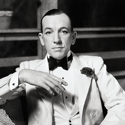
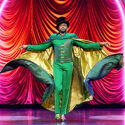






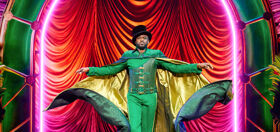







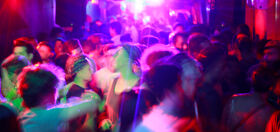
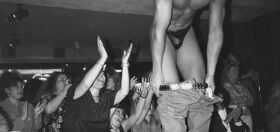

ChuckF
Gay men have been redefining masculinity for years. One good test: how do you see yourself?I have always considered myself a man. Period. Do I do silly things? Sometimes,but that doesn’t define. Each man will define it for himself.
Sansacro
We can only hope.
But, as with all attempts to define or contain masculinity, contradictions abound. Participating in sports does not necessarily make you homophobic or “masculine”. There are also high levels of homoeroticism in sports and all masculinist institutions. For example, some of the most homo-friendly and homoerotic encounters that I’ve had are with military guys. I worked on wall street for over a decade and it was pretty homosocial and homoerotic. Lots of innuendo, touching, and allusions. The straight guys identified as such, but they had no problems grabbing my ass, standing far away from a urinal to show me their junk, and feeling me up when we were both drunk after work.
So, once again, QTY, the world is much more complex. But Im all for dropping the pretenses of masculinity along with the illusion that being “gay” says anything much about me, except that I, completely comfortable with female sexuality and female bodies, prefer to have sex with ONLY certain types of men, in certain situations, and that I fall in love with even fewer kinds of guy.
Black Pegasus
So if I lived in a land call Queerty I’m to believe male bisexuality is now a thing, and the rigid lines of masculinity are softening.
More bullshhht…
heavylifter
So many young boys growing up with no father in their life is not a sign of “progress” but a sign of a damaged, dysfunctional society.
The above article is blatant feminist propaganda.
PRINCE OF SNARKNESS aka DIVKID
we see the only workable common sense definition of “masculinity” boils down to two things: voice and mannerisms. That’s all. And some exceptional individuals can be deficient in one or other of these ( requiring a degree of compensation) but not both: e.g. Mike Tyson has a high voice…
Everything else such as attire, grooming, occupation, pastimes are secondary and historically and culturally widely variable (gracile Masai warriors heavily adorned with make-up and jewellery) dancing). So to reiterate it’s nothing more than the voice and mannerisms. Simple as that. Egalitarian as that. Lowest common denominator shit as that. Not inherently better. Not inherently worse. Just is what it is. Universally recognised signifiers of masculinity ; or how it’s performed, if you prefer.
Mykey
What they forgot to mention is that more straight men feel comfortable around gay/bi guys, which is quite nice!
PRINCE OF SNARKNESS aka DIVKID
@PRINCE OF SNARKNESS aka DIVKID: Beginning of my post was cut off and it won’t let me repost
bottom250
I say embrace your your genuine selves be macho, be fem, be metrosexual be who you want to be just be you.
Dave Downunder
Face the facts Heavylifter this article us saying you are a Neanderthall and your stunted notions are extremely out of date.
GC1985
@heavylifter: What a shocker. I almost expected you to post your drivel in here.
As an out feminine gay man, I am more of a “man” than you ever will be, coward. What decade are you from? The 1950s? Sorry but most of us don’t live to your antiquated standards of what a man is supposed to be.
I think you need to kick the steroids.
AtticusBennett
if you’re anti-feminist, you’re not masculine. you’re just a faux macho-posturing wimp desperately trying to be like the dad who wished he’d aborted you.